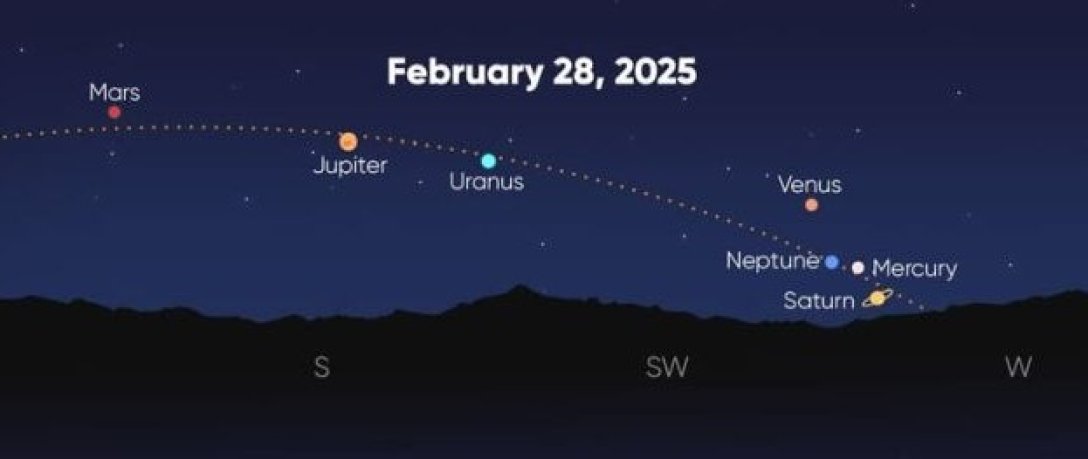Rare planetary alignment: discover when to witness the unique positioning of the celestial bodies in our Solar System (photos included).
The phenomenon of planetary alignment is not particularly rare. However, witnessing seven planets seemingly lined up almost perfectly is an occurrence that happens very infrequently. Such an event is anticipated in February. Prior to that, another relatively rare planetary alignment can be observed in January, according to ScienceAlert.
In fact, it is not uncommon for several planets to be positioned on one side of the Sun at the same time, appearing to align. However, it is much rarer to see an alignment involving all seven remaining planets of the Solar System.
Any arrangement of planets numbering from three to eight is referred to as a planetary alignment. In the case of eight planets, Earth is also included. When 5, 6, or 7 planets line up, this is termed a major planetary alignment. However, alignments involving 5 planets occur much more frequently than those with 6. The alignment of all seven planets along an imaginary line is an extremely rare event.
We can expect two so-called planetary parades in the near future.

- Shortly after sunset on January 21, 2025, six planets—Mars, Jupiter, Uranus, Neptune, Venus, and Saturn—will be visible in the sky.
- Shortly after sunset on February 28, 2025, the rarest planetary alignment of seven planets—Saturn, Mercury, Neptune, Venus, Uranus, Jupiter, and Mars—will take place in the sky.

Planetary alignments do not resemble the illustrations of the Solar System, as in reality, the planets are arranged somewhat differently. All planets in the Solar System orbit the Sun in a plane known as the ecliptic. The orbits of some planets are slightly tilted above or below this plane, but they are all more or less on the same level. This uniformity is a result of how the planets formed around the Sun.
Our Sun emerged from a gas cloud that collapsed under the force of gravity, beginning to gather surrounding material to build mass. Some of this material remained in orbit around the young Sun as a protoplanetary disk, where the planets of the Solar System formed. Because they were not influenced by the gravitational pull of other objects, the planets continued to orbit the Sun in a relatively stable position.
At times, planets can be found on one side of the Sun, moving along their orbits, which allows us to see them in the sky simultaneously.
To best observe the two planetary alignments in January and February, it is advisable to use binoculars or a telescope, although some planets will be visible to the naked eye.